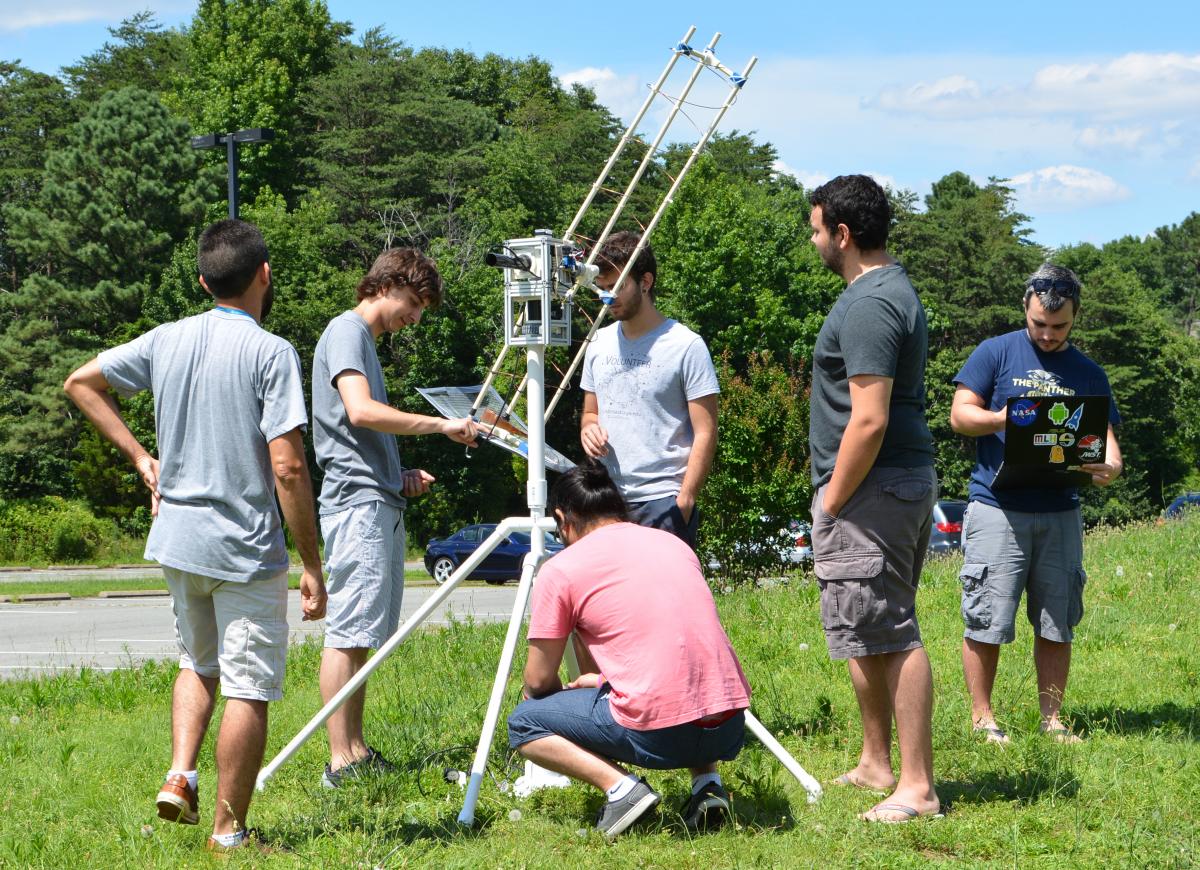SatNOGS node created at Capitol
August 10, 2016Receiving data from CubeSats and other Low Earth Orbit (LEO) satellites can be tricky: their passes over a given location last only a few minutes. That’s not enough time to download images and other large files.
This summer, Capitol students and their counterparts in the university’s Brazilian summer exchange program were involved in a project designed to address this problem.
 The solution? Create a network of satellite ground stations around the globe, linked by computer and equipped with software that can co-ordinate the sharing of data – thus allowing a user in one part of the world to communicate with a satellite even when it is no longer in range.
The solution? Create a network of satellite ground stations around the globe, linked by computer and equipped with software that can co-ordinate the sharing of data – thus allowing a user in one part of the world to communicate with a satellite even when it is no longer in range.
The SatNOGS network, launched in April 2014, currently has three live ground stations, with several others in development. It was designed with experimenters in mind, with stations that can be constructed for under $500 using readily available tools and the help of a 3D printer.
As it expands, the network will be able to provide vastly enhanced capabilities for retrieving status and telemetry signals as well as payload data from a wide range of LEO satellites, including the International Space Station (ISS).
“SatNOGS consists of a group of stations that are connected to the network; through the web you can download data from satellites even when they are not flying over your ground station,” explained Jonathas Kerber, who studies computer engineering at UFAM-Universidade Federal do Amazonas and was a participant in the Capitol summer exchange program, dubbed Capitol CubeSat Intensive. “If it’s within range of another ground station in the network you can still access your satellite, which is very helpful.”
Adjunct professor Nathan Weideman supervised the project, with Capitol students Xavier Allan and Jackie Cleves serving as teaching assistants. In addition to preparing documentation for SatNOGS, Allan and Cleves constructed a dome that will house the antenna system on top of the McGowan Academic Center and protect against weather hazards.
Weideman says the SatNOGS node will be an asset to ongoing satellite projects at Capitol – including TRAPSat, which is focused on collecting space debris with the help of aerogel.
With TRAPSat, we want to be able to retrieve images, Weideman noted. “And that requires constant contact with the satellite. Normally when you’re in LEO you get 7 to 11 minutes, as it passes over you, and that’s it. And often that’s just not long enough to download the data. With enough of these stations, in theory, you could have an orbit that’s constantly in contact -- so you can push things down like photos.”
Kerber, who worked with the antenna controller and tracking software, says the summer program experience was valuable because he’ll be involved in similar activities when he returns to Brazil.
“I will be a ground station manager at my university, and this was a first try that gave me an opportunity to see what should and shouldn’t be done. With this experience, it will be easier to get a team together and make things work quickly,” he said.


